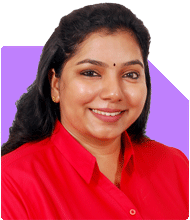Ramalingam Kalirajan |7911 Answers |Ask -Follow
Mutual Funds, Financial Planning Expert - Answered on Jul 10, 2024
He has an MBA in finance from the University of Madras and is a certified financial planner.
He is the director and chief financial planner at Holistic Investment, a Chennai-based firm that offers financial planning and wealth management advice.... more

I am now 65 and retired with no pension and no liability. Have my own house. I have bank FD / SCSS - 2.00 cr with interest @ 15.00 lac pa. MF - 50 lac and Equity stocks - 50 lac and ulip - 20.00 lac Gold 80 lac. Please suggest how to monetise another 5.00 lac pa?
Fixed Deposits (FD) and Senior Citizens Savings Scheme (SCSS)
Your FDs and SCSS are providing you with a secure and steady income of Rs 15 lakh per annum. These instruments are low-risk and ensure capital protection, which is excellent for a retired individual.
Mutual Funds and Equity Stocks
Mutual funds worth Rs 50 lakh and equity stocks worth Rs 50 lakh are great for potential growth. They can provide significant returns, although they come with market risks.
Unit Linked Insurance Plans (ULIPs)
Your ULIP investment of Rs 20 lakh combines insurance and investment. ULIPs typically have a lock-in period and might not be the most efficient for generating immediate income.
Gold Investments
Gold worth Rs 80 lakh is a valuable asset, traditionally considered a hedge against inflation. However, it doesn’t generate regular income unless monetized.
Goal: Additional Rs 5 lakh per annum
Your goal is to generate an additional Rs 5 lakh per annum. Let’s explore strategies to achieve this without compromising your existing financial security.
Monetizing Fixed Assets
Reviewing Your Portfolio
Reviewing and rebalancing your portfolio can help optimize returns. Given your diversified assets, there are several approaches you can consider to generate additional income.
Enhancing FD and SCSS Returns
FDs and SCSS are safe but offer limited returns. To boost income, consider investing a portion of your FDs into higher-yielding instruments. However, keep a balance to ensure liquidity and safety.
Leveraging Mutual Funds
Your Rs 50 lakh in mutual funds can be a powerful tool. Focus on a mix of debt and balanced funds. Debt funds are less volatile and provide steady returns, while balanced funds offer a mix of equity and debt, balancing growth and stability.
Dividend-Yielding Stocks
Your equity portfolio can include high dividend-yielding stocks. These stocks provide regular income through dividends. Ensure you diversify across sectors to mitigate risk.
Monetizing Gold
Gold Loans and Monetization
You can monetize your gold holdings through gold loans. Banks and NBFCs offer loans against gold at reasonable interest rates. This can provide you with liquidity while retaining ownership of your gold.
Sovereign Gold Bonds (SGBs)
Consider converting a portion of your physical gold to Sovereign Gold Bonds (SGBs). SGBs offer an annual interest payout, adding to your income while also benefiting from gold’s price appreciation.
Unit Linked Insurance Plans (ULIPs)
Evaluating ULIPs
ULIPs have a dual benefit of insurance and investment. Review the performance of your ULIPs. If they are underperforming, consider surrendering them and reallocating the funds to more efficient instruments like mutual funds or dividend-paying stocks.
Strategic Investment Approaches
Systematic Withdrawal Plans (SWPs)
SWPs in mutual funds can provide regular income. You can set up a systematic withdrawal plan from your mutual funds, ensuring a steady income stream without depleting your capital significantly.
Annuity Plans
Though you asked not to recommend annuities, certain annuity plans can be considered. They provide a guaranteed income for life, offering financial security. However, ensure they align with your overall strategy and goals.
Detailed Analysis of Investment Options
Debt Mutual Funds
Debt mutual funds are suitable for retirees seeking regular income with low risk. They invest in bonds and other fixed-income securities. They provide better returns than traditional FDs and offer liquidity.
Balanced Funds
Balanced funds, or hybrid funds, invest in both equity and debt. They offer a balanced approach, providing growth potential with reduced risk. These funds can generate regular dividends, adding to your income.
High Dividend Yield Stocks
Investing in high dividend yield stocks ensures a steady flow of income through dividends. Focus on blue-chip companies with a history of consistent dividend payouts. This strategy not only provides regular income but also potential capital appreciation.
Monetizing Gold Holdings
Using gold loans or investing in SGBs can unlock the value of your gold holdings. Gold loans provide immediate liquidity, while SGBs offer annual interest payouts. Both options can help generate additional income without selling your gold.
Balancing Risk and Return
Diversification
Diversification is key to managing risk. Spread your investments across various asset classes. This strategy reduces the impact of poor performance in any single asset class.
Regular Review and Rebalancing
Regularly review your portfolio to ensure it aligns with your financial goals. Rebalance your investments to maintain the desired asset allocation. This approach helps in optimizing returns and managing risk.
Professional Guidance
Consulting a Certified Financial Planner can provide personalized advice. A CFP can help you tailor a strategy based on your specific needs, risk tolerance, and financial goals.
Power of Compounding
Long-Term Growth
Compounding is the process where returns generate further returns. Even in retirement, compounding can significantly enhance your wealth over time. Regular investments and reinvestment of returns are crucial for benefiting from compounding.
SIPs and SWPs
Systematic Investment Plans (SIPs) and Systematic Withdrawal Plans (SWPs) leverage the power of compounding. SIPs ensure disciplined investing, while SWPs provide regular income. Together, they create a balanced approach to growing and preserving wealth.
Final Insights
To generate an additional Rs 5 lakh per annum, leverage a mix of debt funds, balanced funds, high dividend yield stocks, and monetizing gold. Regularly review and rebalance your portfolio to align with your financial goals. Consider systematic withdrawal plans for steady income. Consulting a Certified Financial Planner can provide tailored advice for optimizing your returns.
Your diversified portfolio provides a strong foundation. With strategic adjustments, you can achieve your goal of additional income while preserving and growing your wealth. Stay disciplined, keep a long-term perspective, and make informed decisions.
Best Regards,
K. Ramalingam, MBA, CFP,
Chief Financial Planner,
www.holisticinvestment.in
You may like to see similar questions and answers below
Ramalingam Kalirajan |7911 Answers |Ask -Follow
Mutual Funds, Financial Planning Expert - Answered on May 15, 2024
Ramalingam Kalirajan |7911 Answers |Ask -Follow
Mutual Funds, Financial Planning Expert - Answered on Jul 02, 2024
Ramalingam Kalirajan |7911 Answers |Ask -Follow
Mutual Funds, Financial Planning Expert - Answered on Jul 17, 2024
Dr Dipankar Dutta |751 Answers |Ask -Follow
Tech Careers and Skill Development Expert - Answered on Feb 07, 2025
Pushpa R |50 Answers |Ask -Follow
Yoga, Mindfulness Expert - Answered on Feb 07, 2025
Ramalingam Kalirajan |7911 Answers |Ask -Follow
Mutual Funds, Financial Planning Expert - Answered on Feb 07, 2025
Ramalingam Kalirajan |7911 Answers |Ask -Follow
Mutual Funds, Financial Planning Expert - Answered on Feb 07, 2025
Ramalingam Kalirajan |7911 Answers |Ask -Follow
Mutual Funds, Financial Planning Expert - Answered on Feb 07, 2025
Ramalingam Kalirajan |7911 Answers |Ask -Follow
Mutual Funds, Financial Planning Expert - Answered on Feb 07, 2025
Ramalingam Kalirajan |7911 Answers |Ask -Follow
Mutual Funds, Financial Planning Expert - Answered on Feb 07, 2025
Ramalingam Kalirajan |7911 Answers |Ask -Follow
Mutual Funds, Financial Planning Expert - Answered on Feb 07, 2025
Ravi Mittal |523 Answers |Ask -Follow
Dating, Relationships Expert - Answered on Feb 07, 2025
Ramalingam Kalirajan |7911 Answers |Ask -Follow
Mutual Funds, Financial Planning Expert - Answered on Feb 07, 2025




















